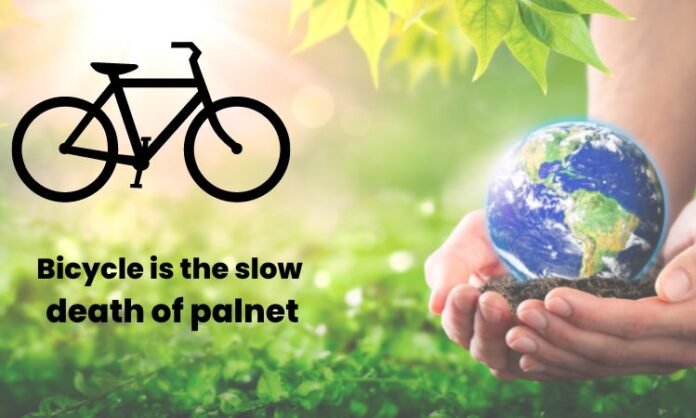With climate change becoming a major issue around the world, it’s time to ask whether the bicycle is contributing to the slow death of our planet. Find out in this post!
If you want to read more about interesting facts click here:
Understanding the Impact of Bicycles on Climate Change:
While bicycles are often hailed as a green form of transportation, the reality is that they do have an impact on climate change. The production of bicycle frames and components can generate a significant amount of pollution, and the use of bicycles can lead to increased air pollution due to the burning of fossil fuels. Furthermore, the rubber tires used in bicycles need to be replaced regularly, adding further strain to already overburdened waste management systems. Therefore, while they are generally considered an eco-friendly form of transportation, it’s important to consider all aspects before determining their role in climate change.
Analyzing Bicycle Use and Its Environmental Effects.
To determine the impact of bicycles on our environment, it is necessary to analyze their use and the resources required to produce them. This includes examining the production of materials such as aluminum and steel frameworks, tires, spokes, and other small parts. Additionally, the energy used to produce these products must also be taken into account. With this information in hand, it’s then possible to examine how much carbon dioxide is released during bicycle production and use, in comparison with other forms of transport.
A banker made the economists think this when they said about bicycles:
Cyclist is a disaster for the country’s economy {they don’t} buy cars and don’t borrow money to buy them. They don’t pay insurance policies. Don’t buy fuel. Don’t pay to have the car serviced and no repairs are needed. They don’t use paid parking. Does not cause any major accidents. No need for multi-lane highways
They are not getting obese.
Healthy people are not necessary or useful to the economy. They are not buying medicines. They don’t go to hospitals or doctors. They add nothing to the country’s GDP
Exploring Benefits of Bicycle Transportation.
While there are certainly some environmental costs associated with bicycle transportation, perhaps the most significant benefit bikes can provide is an overall reduction of CO2 emissions. This occurs when bike riders replace car drivers and use their bicycles as a form of transportation instead. Because bicycles require no gasoline, they produce zero emissions and contribute far less to global warming compared to gas-powered vehicles. Additionally, cycling requires less physical exertion than running or jogging, thus making it more accessible to people of all ages.
Looking at Strategies to Mitigate Carbon Allocation from Cycling.
There are a variety of practical strategies we can employ to minimize carbon allocation from cycling. For example, introducing e-bikes into the transport ecosystem. An e-bike is an electrically assisted bicycle also known as a power-assisted bicycle that helps riders ride a bit farther with less effort. Additionally, encouraging bike-sharing initiatives and improving bike infrastructure are two more ways of reducing carbon allocations from cycling. By making it more accessible and convenient for people to use bicycles for transportation, then we could find ourselves in a much greener future.
Examining How Bike Prestige Impacts Carbon Footprint.
Understanding how bicycle transportation impacts the environment requires us to take all potential variables into account, including public perception. As cycling has become more mainstream, bike designs and styles have evolved to become increasingly more visually appealing and sophisticated. This growing bike prestige has helped elevate the positive image of bicycles in our culture and has encouraged more people to hop on their bikes instead of driving cars. This shift towards sustainable mobility is helping reduce global emissions and making for a greener tomorrow.
On the contrary, each new McDonald’s store creates at least 30 jobs actually 10 cardiologists 10 dentists 10 dietitians, and nutritionists obviously as well as the people who work in the store itself.
Choosing wisely a bike or a McDonald’s is something to think about.
Emeric Sillo





